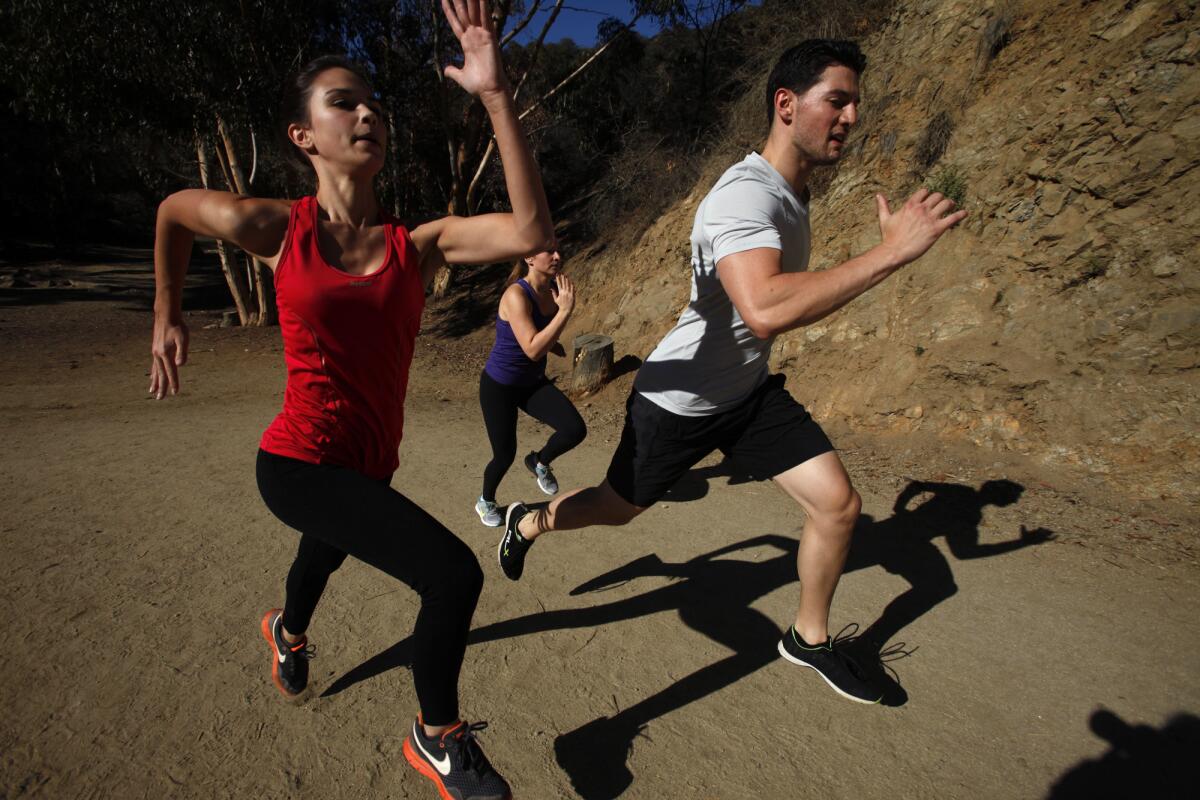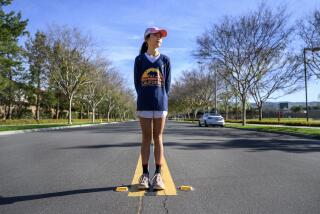When it comes to jogging, less is more, study argues

Hey, fitness junkies, here’s something to ponder the next time you lace up your athletic shoes for that long, heart-pounding run: A Danish study recently concluded that high-intensity, high-mileage joggers die at the same rate as channel-surfing couch potatoes.
The study, published Monday in the Journal of the American College of Cardiology, is the latest to confront the controversial topic of what constitutes too much exercise.
Although previous research has found that physically active people have at least a 30% lower risk of death compared with inactive people, the ideal “dose” of exercise remains uncertain.
Noting that the most famous - and perhaps apocryphal - case of physically overdoing it involved the Athenian messenger Pheidippides, who dropped dead after running 26 miles from the battlefield of Marathon to shout the word “Nike!” or “victory,” the researchers hypothesize that strenuous running can damage the heart over time.
“Long-term excessive exercise may be associated with coronary artery calcification, diastolic dysfunction and large artery wall stiffening,” wrote lead study author Dr. Peter Schnohr of Copenhagen’s Frederiksberg Hospital and his colleagues.
“To our knowledge, there has been no study of the longevity of marathon, half-marathon or triathlon participants, but such studies would clearly be informative.”
The researchers based their findings on data from the Copenhagen Heart Study, and followed 1,098 healthy joggers and 3,950 nonjoggers for about 12 years. By the end of the study, 28 of the joggers and 128 of the nonjoggers had died.
“Although joggers as a group appear to live longer than sedentary nonjoggers, light joggers and moderate joggers have lower mortality rates than sedentary nonjoggers,” the authors wrote.
However, strenuous joggers - people who ran faster than 7 mph for more than four hours a week; or who ran faster than 7 mph for more than 2.5 hours a week with a frequency of more than three times a week - had a mortality rate that “is not statistically different from that of the sedentary group,” the authors wrote.
The study is by no means the last word in the matter - the researchers themselves say the subject needs further investigation - but it may come as welcome news to those easygoing joggers who prefer shuffling along at modest speeds.
“The dose of running that was most favorable for reducing mortality was jogging 1 to 1.4 hours per week, with no more than three running days per week, at a slow or average pace,” the authors wrote. (A slow or average running pace was determined to be 5 mph, or a 12-minute mile.)
In an editorial that accompanied the paper, the authors noted that the study was limited by a number of factors.
The study participants included white men and women from Copenhagen between the ages of 20 and 93. However, it did not take into account other forms of physical exercise besides running, according to the editorial’s lead author, Duck-Chul Lee, an Iowa State University kinesiologist, and his colleagues.
Lee and his colleagues, who did not participate in the Copenhagen study, wrote that since the study participants self-reported their running habits, they may be subject to error or bias. They wrote also that the 127 study participants who were identified as strenuous joggers may have been too small a group to accurately calculate mortality risk.
“Further studies are needed to better evaluate this controversial issue,” wrote the authors of the editorial. “Ideally, these studies will be well-controlled interventions, because we certainly agree that the goal is not to unnecessarily frighten people who wish to participate in more strenuous exercise.”
Follow @montemorin for science news







